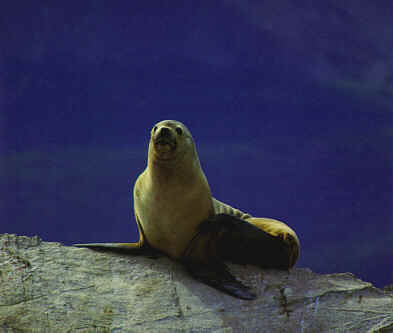Cast against the vastness of the South American sky,
an astonishing panorama of color and form and life reveals itself
in the land called Patagonia. From
the massive glaciated crags of the Andes Mountains
through dense subantarctic forests, across the ancient sea bed that
is now the barren steppe, the land drops precipitously to the sea. Everywhere
the forces of nature have uniquely shaped this land, its plant life and bountiful
animals.
The earth's most southerly landmass above Antarctica and the
furthest reach of the Americas, Patagonia
lies predominantly in Argentina with a portion in Chile.
Because of its remote location, it has been the subject of lore
for centuries. A land of often formidable extremes, it has
dwarfed man and remained relatively untouched to this day,
everywhere providing evolutionary clues in its remnants of
petrified forest, volcanoes,
glaciers, and
coastal cliffs layered with
fossilized marine life.
Stretching from the edge of the Argentine pampas along
the Río Colorado in the north to
Tierra del Fuego
and the Beagle Channel
near Cape Horn in the
south, Patagonia ranges
eastward from the Andes
to the South Atlantic Ocean.
Occupying over a quarter of the country,
Argentina's Patagonia
is 308,000 sq mi/800,000 sq km, including approximately
1200 mi/1920 km of mountain
range and 1100 mi/1770 km of ocean
coast merging at the southern
terminus. This volume presents the three distinct
geographical division of Argentine
Patagonia: mountains,
steppe and
coast.


Copyright © 1995-2024 PANGAEA. All Rights Reserved.